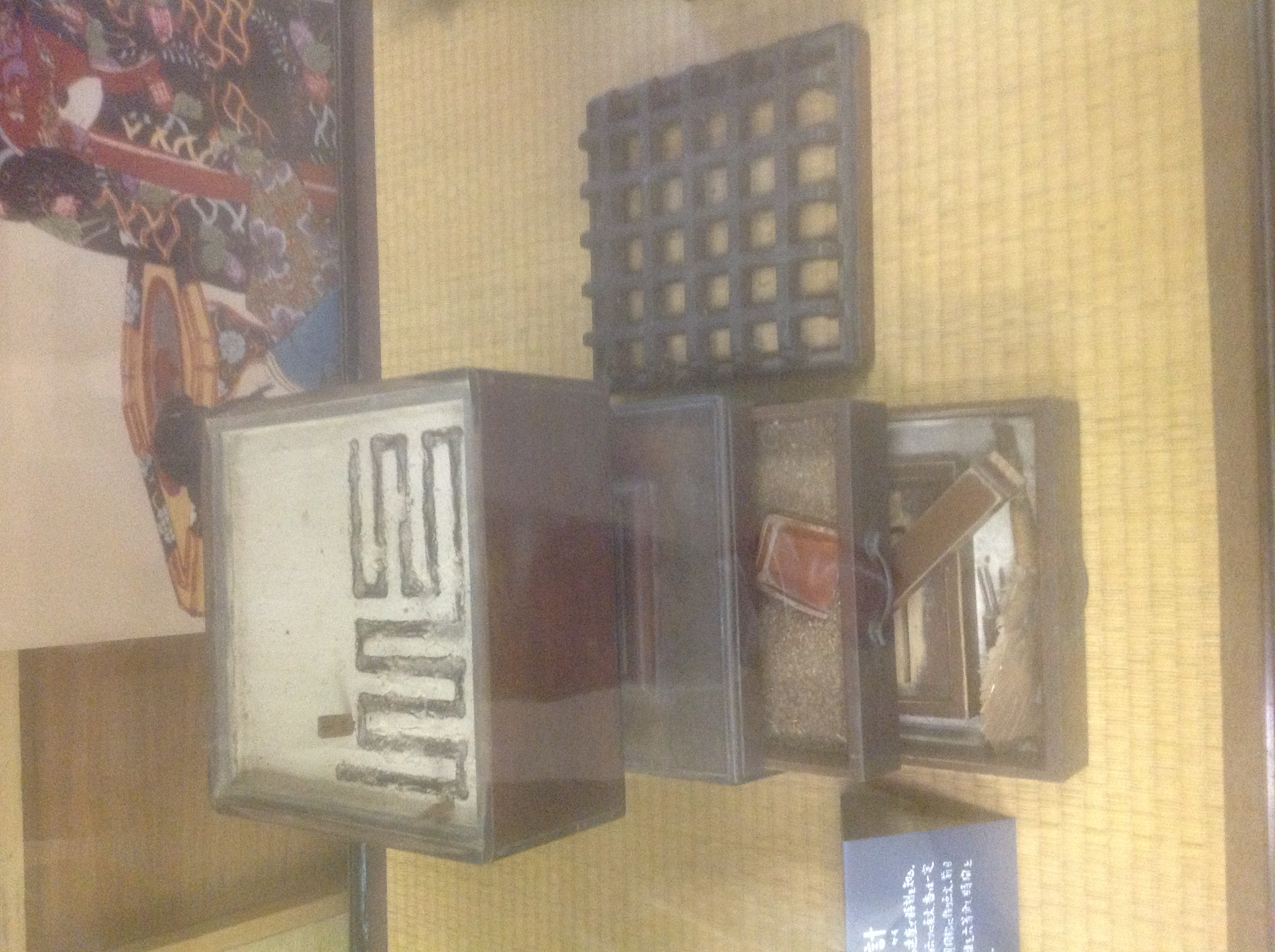Daimyo Clock Museum on:
[Wikipedia]
[Google]
[Amazon]


 The Daimyo Clock Museum (大名時計博物館) is a small community-run museum in Yanaka 2-chōme,
The Daimyo Clock Museum (大名時計博物館) is a small community-run museum in Yanaka 2-chōme,


 The Daimyo Clock Museum (大名時計博物館) is a small community-run museum in Yanaka 2-chōme,
The Daimyo Clock Museum (大名時計博物館) is a small community-run museum in Yanaka 2-chōme, Tokyo
Tokyo (; ja, 東京, , ), officially the Tokyo Metropolis ( ja, 東京都, label=none, ), is the capital and largest city of Japan. Formerly known as Edo, its metropolitan area () is the most populous in the world, with an estimated 37.468 ...
. The museum was established in 1972 to display Japanese clock
A is a mechanical clock that has been made to tell traditional Japanese time, a system in which daytime and nighttime are always divided into six periods whose lengths consequently change with the season. Mechanical clocks were introduced into ...
s from the Edo period
The or is the period between 1603 and 1867 in the history of Japan, when Japan was under the rule of the Tokugawa shogunate and the country's 300 regional '' daimyo''. Emerging from the chaos of the Sengoku period, the Edo period was characteriz ...
collected by Sakujiro (known as "Guro") Kamiguchi (1892–1970).
Origin of the Museum collection
Sakujiro Kamiguchi owned a highly unusual log cabin shop which sold western clothing. The shop became known locally as "Grotesque", and this was the origin of Kamiguchi's nickname, "Guro". Kamiguchi had many interests, including pottery. He first became interested in Japanese clocks when he came across an English-made watch with an attachedsundial
A sundial is a horological device that tells the time of day (referred to as civil time in modern usage) when direct sunlight shines by the apparent position of the Sun in the sky. In the narrowest sense of the word, it consists of a flat ...
in a local shop. Kamiguchi realised the unique cultural importance of daimyo clocks:
:"Because the Tokugawa ''shōguns'' closed the country, a pure Japanese-style clock was created. Like the ukiyoe woodblock prints, the importance of these clocks was recognised abroad, and the clocks have been bought up at cut-rate prices and taken away from the country right up to the time of the Great Kanto Earthquake
Great may refer to: Descriptions or measurements
* Great, a relative measurement in physical space, see Size
* Greatness, being divine, majestic, superior, majestic, or transcendent
People
* List of people known as "the Great"
*Artel Great (born ...
. Now it won't be long before a Japanese scholar wishing to research the development of these clocks will be reduced to visiting foreign collections."
In 1951, Kamiguchi established the Kamiguchi Japanese Clock Preservation Society, and gifted his collection to it. After his death in 1970, his son Hitoshi Kamiguchi became President of the Society and opened the museum in April 1972.
Exhibits
''Daimyō
were powerful Japanese magnates, feudal lords who, from the 10th century to the early Meiji era, Meiji period in the middle 19th century, ruled most of Japan from their vast, hereditary land holdings. They were subordinate to the shogun and n ...
s'' ('great lords') were the feudal aristocracy of Japan in the Edo period
The or is the period between 1603 and 1867 in the history of Japan, when Japan was under the rule of the Tokugawa shogunate and the country's 300 regional '' daimyo''. Emerging from the chaos of the Sengoku period, the Edo period was characteriz ...
and they were the only people who could afford expensive timepieces. The museum displays mechanical clocks, sundials and incense clock
The incense clock () is a timekeeping device that originated from China during the Song Dynasty (960-1279) and spread to neighboring East Asian countries such as Japan and Korea. The clocks' bodies are effectively specialized censers that hold i ...
s previously owned by daimyo families. There are around 50 pieces on display from the collection's total of some 200 items, in a single 83 square metre room. The museum's labels are all in Japanese only, though an English-language pamphlet explaining the traditional Japanese timekeeping system is also available.
Access
The nearest metro station is Nezu on theChiyoda line
The is a subway line owned and operated by Tokyo Metro in Tokyo, Japan. On average, the line carries 1,447,730 passengers daily (2017), the second highest of the Tokyo Metro network, behind the Tozai Line (1,642,378).Nippori.
Other clock museums in Japan (Japan Clock and Watch Association)
* ttps://itunes.apple.com/us/app/daimyo-clock/id1268135788?mt=8 An iOS implementation of a Daimyo Clock for iPhone and iPad
External links
Other clock museums in Japan (Japan Clock and Watch Association)
* ttps://itunes.apple.com/us/app/daimyo-clock/id1268135788?mt=8 An iOS implementation of a Daimyo Clock for iPhone and iPad
References
{{coord, 35.72128, 139.76627, format=dms, type:landmark_region:JP, display=title Museums in Tokyo Horological museums Edo period Museums established in 1972 1972 establishments in Japan Buildings and structures in Taitō